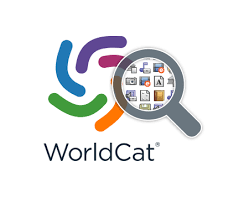Purification, Characterization, Identification, and Anticancer Activity of Bacteriocin from Leuconostoc carnosum
DOI:
https://doi.org/10.69923/6c30r977Keywords:
Anticancer activity, A549 lung cell line, Bacteriocin, Leuconostoc carnosum, NHF cell lineAbstract
Cancer is the second most common cause of mortality in most developed countries, behind heart disease. Cancer is defined as the aberrant proliferation of cells. It is also the most feared disease. By 2025, it is anticipated that there will be more than 20 million new instances of cancer worldwide. Chemotherapy is still the most widely utilized therapeutic option among the several alternatives offered to patients. Currently available anticancer medications are either entirely manufactured molecules or substances extracted from plants and their derivatives. Evidence exists that conventional cancer treatments have a number of unfavorable side effects. It is well known that cancer cells can get resistant to the treatments that are currently accessible. Effective cancer treatment is still hard to come by, even with the latest developments in tumor therapy. A new treatment consisting of pure bacteriocin from Leuconostoc carnosum an effect on cancer cell. Different concentrations (1000, 500, 250, 125, 62.5, 31.25 μg/mL) of bacteriocin purified from Leuconostoc carnosumwhich isolated from broccoli were applied on the A549 lung cell line. A significant cytotoxicity ratio of bacteriocin was 67.57828 % caused by the highest used concentration 1000μg/mL towards A549 lung cell line compared to normal human fibroblast cells, which were resist to the same concentration of it with maximum cytotoxicity 5.870841 %. The IC50 for A549 lung cell line was μg/mL, while IC50 for NHF cell line was 111.9. The highest activity of bacteriocin against cancer cells was established at 1000 μg/mL.
Downloads

Downloads
Published
Issue
Section
License
Copyright (c) 2025 Iraqi Journal for Applied Science

This work is licensed under a Creative Commons Attribution-NonCommercial-NoDerivatives 4.0 International License.
Licenses and Copyright
The following policy applies to the Iraqi Journal of Sciences (IJAS).
- IJAS applies Creative Commons Attribution (CC BY) license
- If you have written permission to do so, yes. If your manuscript contains content such as photos, images, figures, tables, audio files, videos, etc., that you or your co-authors do not own, we will require you to provide us with proof that the owner of that content (a) has given you written permission to use it, and (b) has approved of the CC BY license being applied to their content. We provide a form you can use to ask for and obtain permission from the owner. If you do not have owner permission, we will ask you to remove that content and/or replace it with other content that you own or have such permission to use. Don't assume that you can use any content you find on the Internet, or that the content is fair game just because it isn't clear who the owner is or what license applies. It's up to you to ascertain what rights you have” if any” to use that content.
- Many authors assume that if they previously published a paper through another publisher, they own the rights to that content and can freely use that content in their PLOS paper, but that is not necessarily the case; it depends on the license that covers the other paper. Some publishers allow free and unrestricted re-use of article content they own, such as under the CC BY license. Other publishers use licenses that allow re-use only if the same license is applied by the person or publisher re-using the content. If the paper was published under a CC BY license or another license that allows free and unrestricted use, you may use the content in your IJS paper provided that you give proper attribution, as explained above. If the content was published under a more restrictive license, you must ascertain what rights you have under that license. At a minimum, review the license to make sure you can use the content. Contact IJAS if you have any questions about the license. If the license does not permit you to use the content in a paper that will be covered by an unrestricted license, you must obtain written permission from the publisher to use the content in your IJSPlease do not include any content in your IJAS paper that you do not have rights to use, and always give proper attribution.
- If any relevant accompanying data is submitted to repositories with stated licensing policies, the policies should not be more restrictive than CC BY.
- IJAS reserves the right to remove any photos, captures, images, figures, tables, illustrations, audio and video files, and the like, from any paper, whether before or after publication, if we have reason to believe that the content was included in your paper without permission from the owner of the content.
References
Marshall,G.C.and H.W.Ohm 1987 .Yield responses of 16 winter wheat cultivars to row spacing and seeding rate .Agronomy Journal .79:1027-1030









